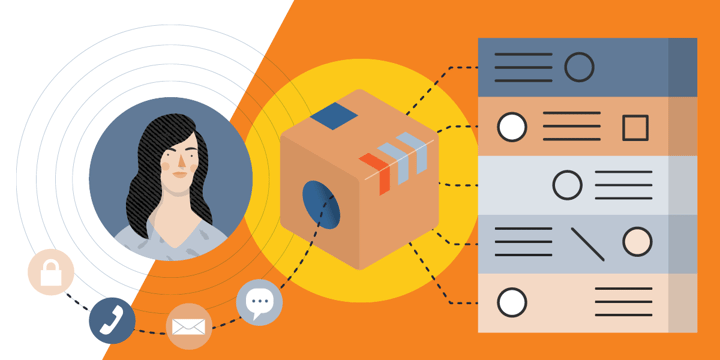Toby Shulruff works at the intersection of technology and domestic violence at the Safety Net Project of the National Network to End Domestic Violence. Erica Blake is a data project manager at Tech Impact, focusing on nonprofit assessment, implementation, and efforts aimed at supporting nonprofits and their use of technology.
Many programs serving survivors of domestic violence and sexual assault struggle to manage data about the services they provide. They should select a tool that allows them to quickly report on the metrics required by major funders, but they will also want to select a system that allows them to analyze their services, programs, client characteristics, and outcomes that matter most to them.

Most such programs operate with a mix of state and local funds from both public and private sources. Funders and donors want to see data that shows that their money has been well spent, and each funder asks for reports about services in a different way.
Data can also help programs assess their services internally to make improvements. This can include taking a step back to see who in their communities is seeking services and let this information guide future outreach and community partnerships to address inequities.
Data and Privacy
While data can be a valuable tool for DV/SA programs, the privacy of survivors can be harmed by how programs collect and use data. Supporting a survivor's right to privacy is an essential part of survivor-centered advocacy. It affects their safety, their trust of your program, their ability to control their own life, and their dignity.
In recognition that survivor privacy is a priority, federal laws and funding regulations in the Violence Against Women Act (VAWA), the Family Violence Prevention and Services Act (FVPSA), and the Victims of Crime Act (VOCA) place restrictions on the collection and sharing of data. These restrictions are more complex than those of many other social services and even more strict than more commonly known laws like HIPAA (the Health Insurance Portability and Accountability Act). Read more in Safety Net's Confidentiality Toolkit.
DV/SA programs are permitted to share non‐personally identifying aggregate data about the services they've provided. Federal grant conditions also allow the sharing of non‐personally identifying demographic information in order to comply with federal, state, tribal, or territorial reporting, evaluation, and data collection requirements. It is often for this purpose that programs consider using a database.
Available Solutions
In seeking a tool to manage your data in a way that maximizes survivor privacy, you are swimming upstream against broader technology trends. Information technology is built on the idea that we should collect as much information as possible, store it for the longest time possible, and be able to "mine" it for as much meaning as possible. The advent of cloud technology poses an additional challenge by moving data off-site and into the cloud.
Contrary to these trends, in order to protect survivor privacy, DV/SA programs should collect the least amount of information needed to support survivors and keep it for the shortest amount of time.
An ideal technology solution would give survivors control over their own data, allowing them to store it safely, share it by choice when and with whom they want to, and access it from wherever they want to. Current options entrust survivors' data to DV/SA programs and other organizations that they seek services from.
So long as DV/SA programs are holding on to survivor data, law and best practice require that they choose a database that maintains confidentiality and protects the privacy and safety of survivors. The technology should offer the strongest possible protections, including encryption that allows only the program to read the data. The vendor should not be able to see information about individual survivors and should understand that the program's confidentiality obligations are different from other settings used by hospitals or other social services.
Selecting a Tool
Once you've made the decision that you need a case management system, you should follow the steps below to help your agency select the best system for your needs.
- Designate a database selection and implementation team to learn about desired functionality and system priorities from key staff members.
- Review essential reports to determine reporting requirements and identify where significant staff resources are being expended.
- Review confidentiality obligations and understand how they apply to case management systems. The National Network to End Domestic Violence offers a Confidentiality Toolkit and technical assistance.
- Conduct market research:
- Ask other DV/SA programs what tools they are using and how they feel about them.
- Check out this guide to selecting a database from the National Network to End Domestic Violence.
- Schedule demonstrations and conversations with vendors to see the system in action, ask about data privacy and security protections, and get pricing information.
Most tools for managing data require a significant monetary investment, as well as an equally significant investment of staff time to transition to the system and get all staff and volunteers up to speed on using it. Remember that moving data from an older system, as well as any customizations and changes, will likely have an additional cost. If changes can be done in-house, be sure to take into account needed training and support to the staff responsible for that work.
Note: If your program receives HUD funding, ensure that the database is a "Comparable Database." Read more about what DV/SA programs need to know about Comparable Databases from the National Network to End Domestic Violence.
In summary, selecting, implementing, and adopting a new data system is a big undertaking for any nonprofit organization. Dedicating internal resources to understanding data collection, management, and analysis needs before comparing systems and selecting a vendor will be vital to successful system implementation.
Additional Resources
- We know that organizations focused on domestic violence face unique challenges around technology, security, and effective communications. Take this survey to help us design solutions to best fit your needs.
- Learn What You Should Know About the New California Consumer Privacy Act.
- Get tips on how to conduct a software selection process.
- Find out How to Overcome Your Database Demons.
- See a webinar on Technology for Social Change.
- Get TechSoup Courses' All Access Pass to Successful Tech Planning.








